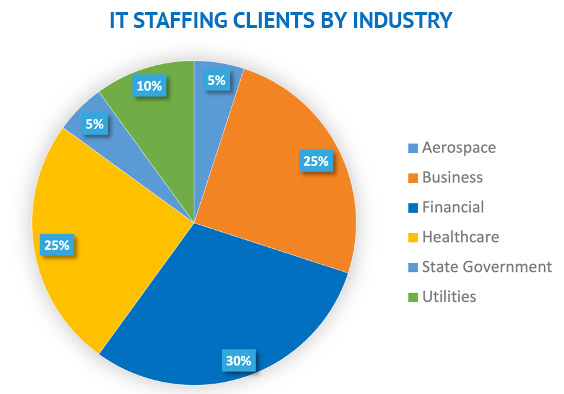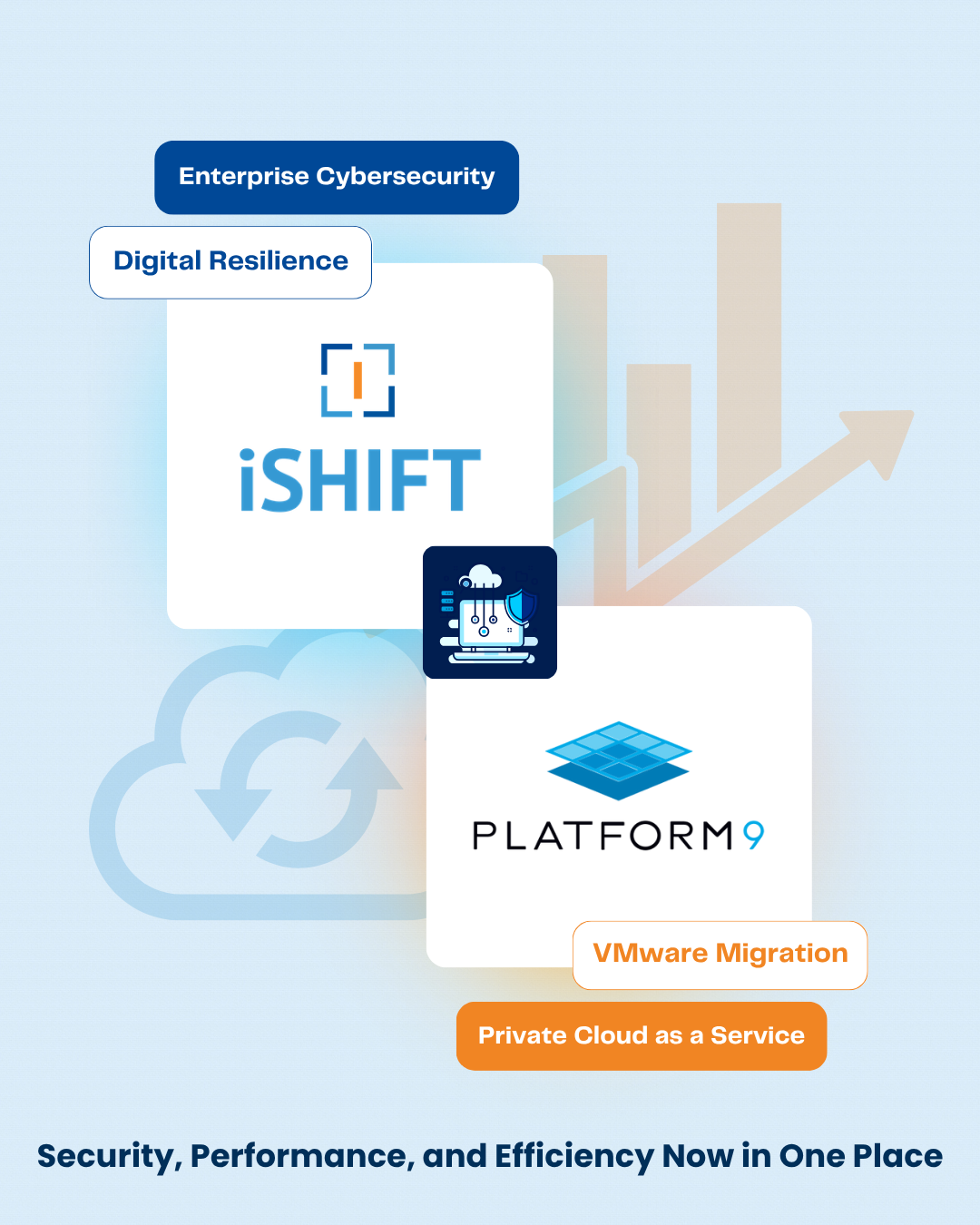1
Shortage of Skilled IT Professionals Continues
In the past six months our IT Staffing unit has been very busy helping our clients find technical talent. We wanted to make sure their strategic IT projects didn’t lag behind and their business goals remained on track. That’s why, we’d like to share recent research data about the tech talent sector, as well as our observations from the field.
Technical talent continues to be scarce both in terms of quantity and quality. Moreover, the trend is unlikely to change in the next few years. One of the main reasons is shortage of skilled IT professionals.
In spite of some highly publicized recent layoffs at prominent tech companies, the tech sector continues to be at a near-record low in terms of unemployment rates. According to a recent CompTIA Report, the US unemployment rate for in the technology sector is at 1.3%.
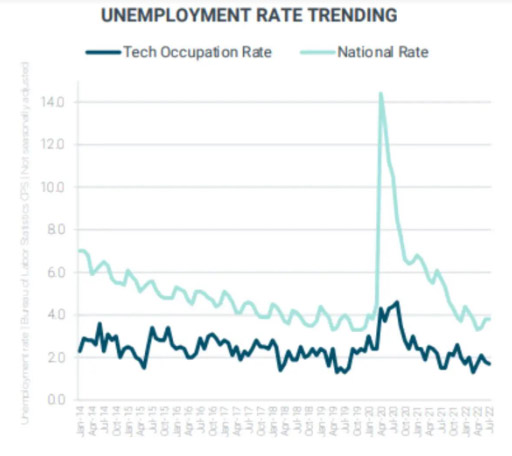
2
Majority of IT Professionals Aren’t Happy with Their Jobs
Multiple studies confirm that a very low percentage of IT professionals plan on keeping their current jobs. There are a variety of reasons for this trend. These include burnout, lack of upward mobility in the tech sector, and a new sensibility to the life-work balance millennials have compared to older generations. Deloitte predicts that by 2025 75% of the global workforce will be made up by millennials.
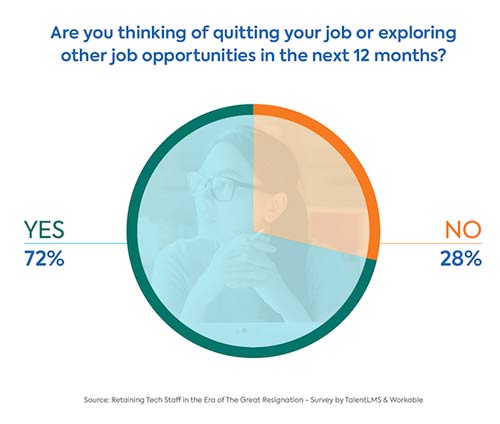
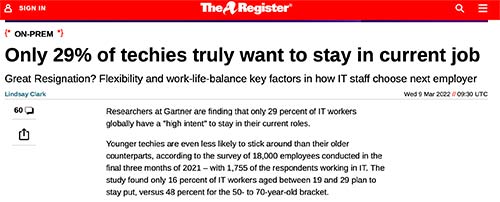
3
Lack of Tech Talent Is Costing Companies
According to Coleman Parkes market research, talent shortage is the gravest problem delaying Cloud Transformation projects. Moreover, the more severe repercussions of this state of affairs is to companies’ bottom line. The impact from lack of tech talent on companies’ revenue losses amounts to $162 Billion annually!
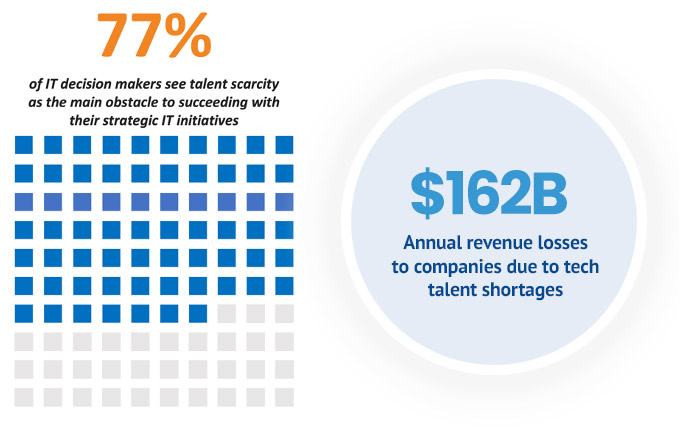
4
Contingent Labor in IT Is on the Rise
More and more, contingent labor is becoming mainstream. Furthermore, work culture patterns among younger workers are shifting from full-time employment to more flexible hybrid and/or free-agent types of engagement. As a result, companies are adapting to these changes. They are developing the necessary mechanisms to budget for the full range of hiring practices. These include the whole spectrum of employments models from full-time to the different variations of contingent work: gig, temp, staffing suppliers, independent contractors, and advisory services.
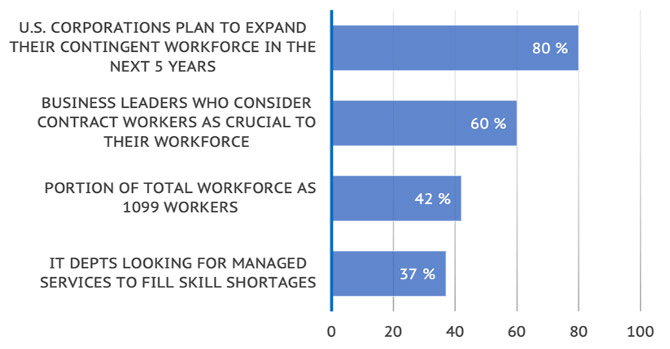
5
The iShift IT Staffing Practice
All these changes in employment practices emerged some 5-6 years ago. We established the iShift IT Staffing practice because our clients needed guidance how to proceed in the new circumstances. They asked us for all kinds of advice. It ranged from defining IT job descriptions to coming up with creative ways to reallocate budgets. Our team was instrumental in helping organizations complete IT projects even when they lacked the necessary technical knowledge and experience in-house.
Here are a few of the reasons organizations come to us when they have a need to fill a specific IT position. Ultimately, they develop a long-term relationship with us.
- We speak tech and we have a vast network of certified IT professionals.
- We are very skilled in providing the right candidate with the right expertise.
- We exceed in finding the candidates that fit the client’s company culture.
- We have flexible options to scale your company up or down: from short-term or long-term contracts to direct hires.
- We offer stress-free engagement cancelation at any time, if needed.
- Our clients value our commitment to finding the right candidate every time
